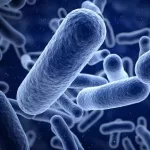Nanoplastics—tiny, nearly invisible particles—are a growing concern not only for the environment but also for human health. Despite their ubiquity in everyday life, these particles remain largely unnoticed and often underestimated. New research out of Umeå University in Sweden has revealed a disturbing link between nanoplastics and antibiotics, shedding light on how these minuscule particles may be altering the way our bodies react to crucial medications.
A Hidden Threat in Our Homes
While the environmental damage caused by plastics is well documented, the health risks posed by nanoplastics are only just beginning to be understood. These particles, often smaller than a thousandth of a millimeter, can easily infiltrate our bodies through air, water, and even skin contact. Surprisingly, indoor air is significantly more polluted with nanoplastics than outdoor air—five times more, according to studies. The primary culprits include household items like synthetic textiles, packaging, and nylon products.
Alarming Findings from Sweden
Researchers at Umeå University recently uncovered a potentially dangerous interaction between nanoplastics and tetracycline, a widely used antibiotic. The study found that these particles can absorb antibiotics and transport them through the bloodstream to unintended parts of the body. This misdirection may reduce the antibiotics’ effectiveness, limiting their ability to target the specific infection they were intended to treat.
“The results are alarming, considering how common nanoplastics are and because effective antibiotics for many can be the difference between life and death,” said Lukas Kenner, professor at the Department of Molecular Biology at Umeå University and lead researcher on the study.
Nanoplastics and Antibiotic Resistance
The implications of this finding are profound. When antibiotics are transported to the wrong areas in the body, they may accumulate and contribute to the development of antibiotic-resistant bacteria—one of the most pressing health concerns of our time. The bond between nanoplastics and antibiotics was found to be particularly strong when nylon, a common plastic found in indoor environments, was involved.
“The ability of nanoplastics to absorb antibiotics raises a serious concern about where these drugs are accumulating and the potential consequences for the development of resistant bacteria,” explained Kenner.
More Research Needed
While this groundbreaking study opens a new avenue of research, much remains to be understood about the full impact of nanoplastics on human health. Further studies are needed to explore how these particles interact with different chemicals and medications in the body, and what long-term effects they may have on our immune systems and overall health.
The study was conducted in collaboration with scientists from the University of Bonn in Germany and the University of Debrecen in Hungary. It emphasizes the need for urgent attention to the potential health risks of nanoplastics, a topic that has largely been overlooked until now.
How Nanoplastics Enter Our Bodies
Nanoplastics are able to enter the human body through various pathways, including inhalation, ingestion, and dermal absorption. Once inside, they can accumulate in tissues and organs, potentially causing inflammation, oxidative stress, and contributing to chronic health conditions. Their ability to bind with various chemicals, including antibiotics, complicates the issue, as these particles could inadvertently alter the effectiveness of critical medications.
Steps to Minimize Exposure
While more research is required, there are practical steps individuals can take to reduce their exposure to nanoplastics. Cutting down on synthetic materials, especially nylon-based products, and opting for natural fibers can make a significant difference. Regularly ventilating your home to reduce airborne particles and using air purifiers with HEPA filters are also effective ways to limit exposure.
Additionally, minimizing the use of single-use plastics and avoiding unnecessary packaging can help curb the release of nanoplastics into the environment. By adopting these small changes, we can collectively reduce the risks posed by these microscopic particles.
A Call for Awareness
The research from Umeå University underscores the need for greater awareness of the dangers posed by nanoplastics. These particles are more than just an environmental nuisance—they may be silently affecting our health in ways we don’t fully understand yet. As we wait for more research and policy measures to address this issue, we must remain vigilant about the materials we use in our everyday lives.
The full study was published in Scientific Reports, and its findings offer a cautionary tale of the unseen dangers lurking in the products we encounter daily.











